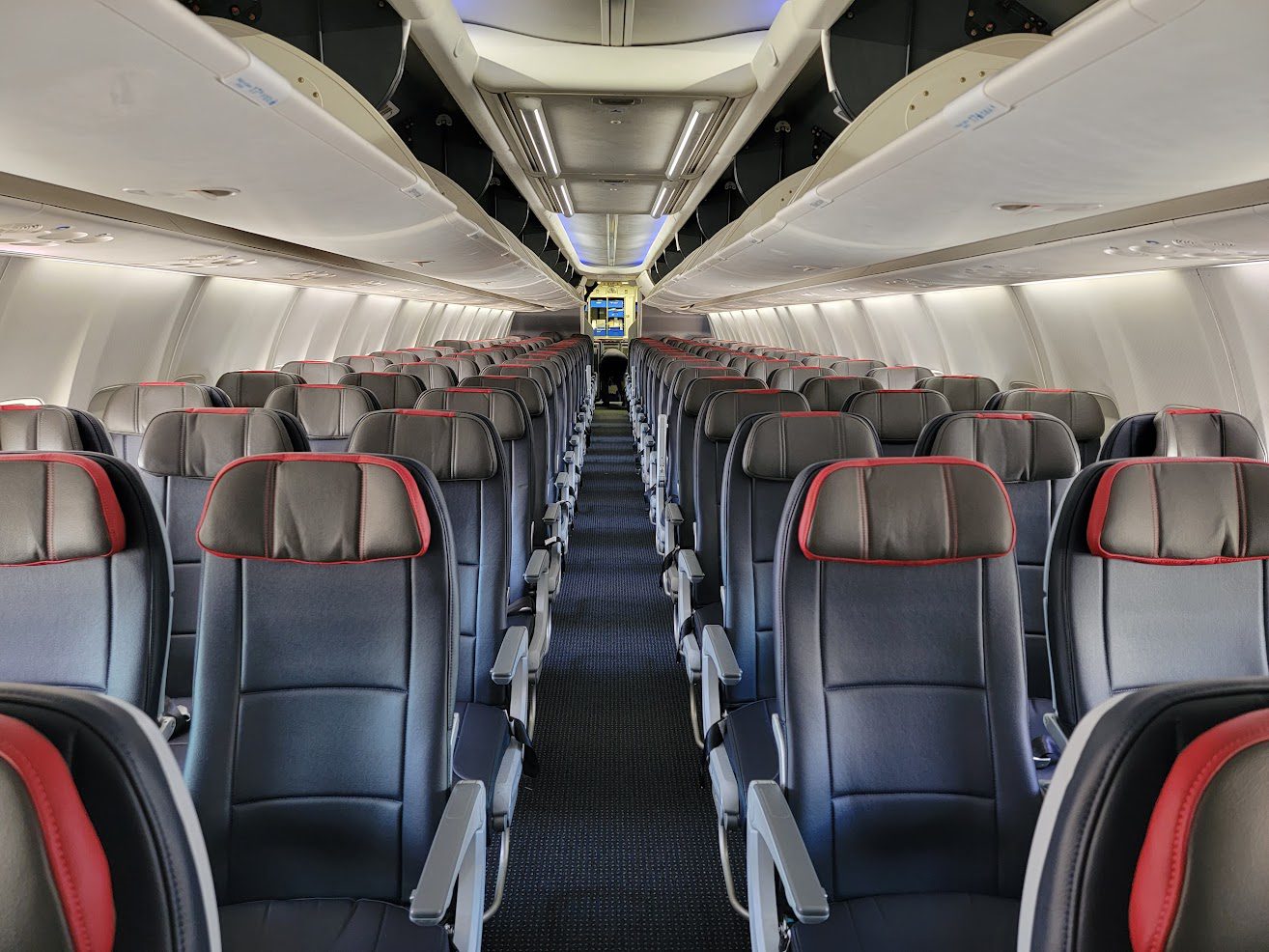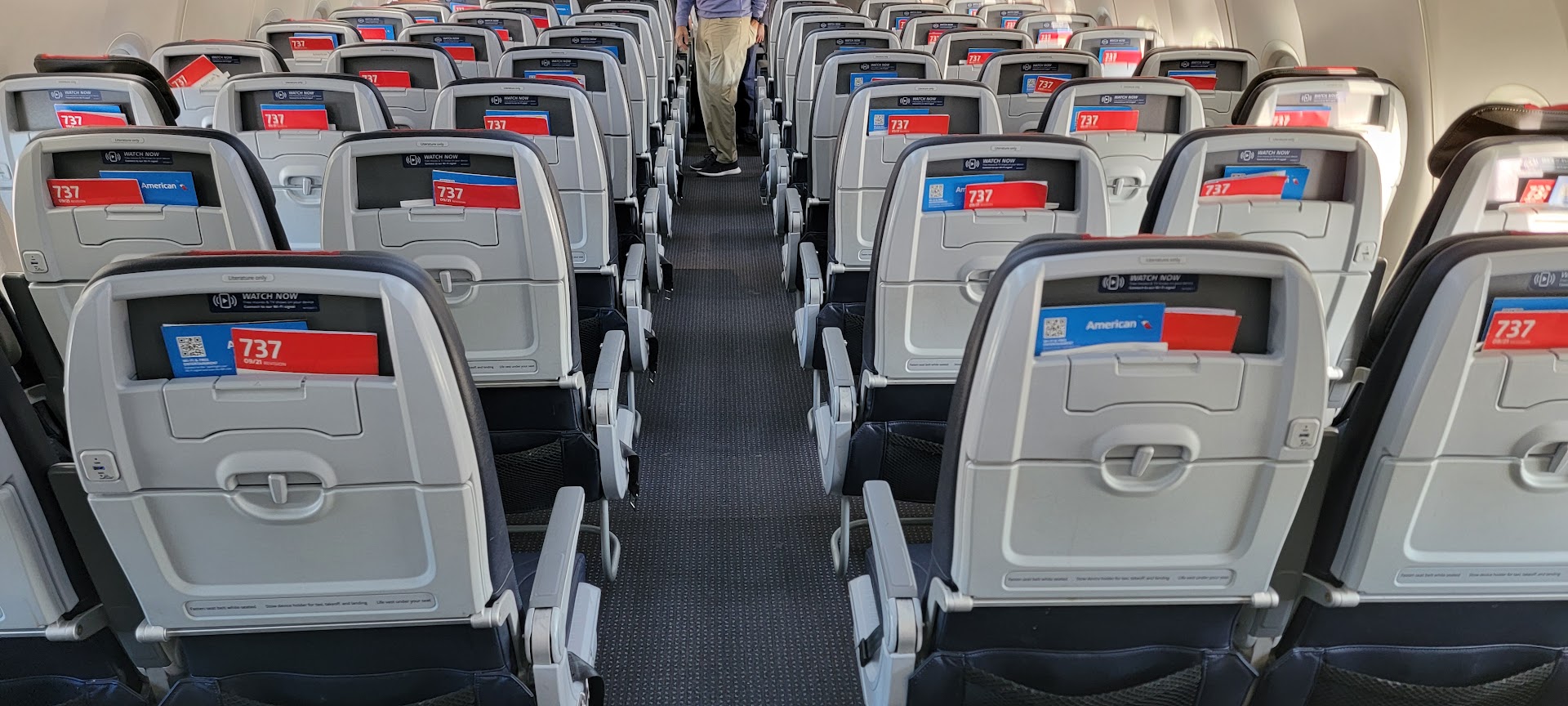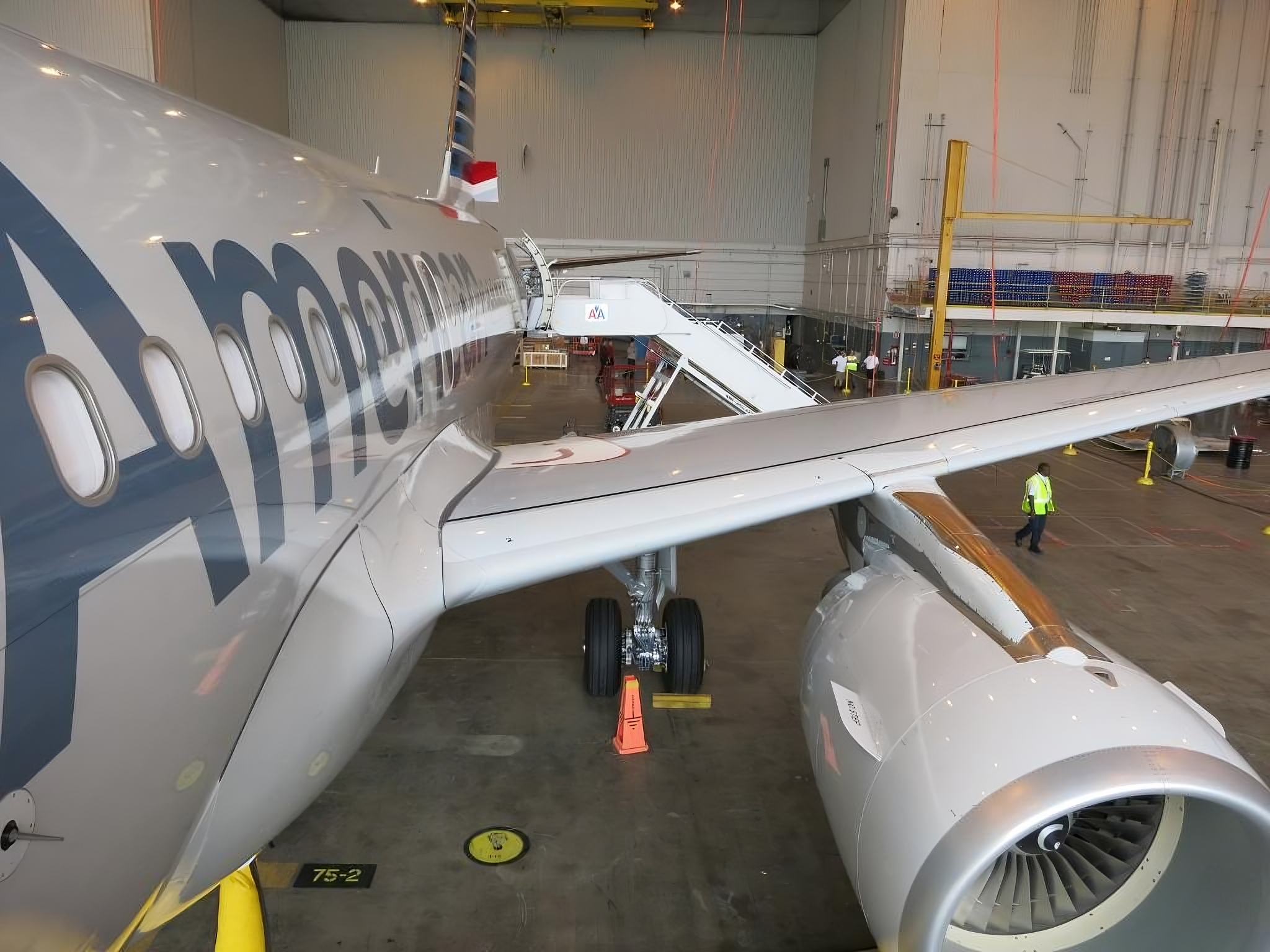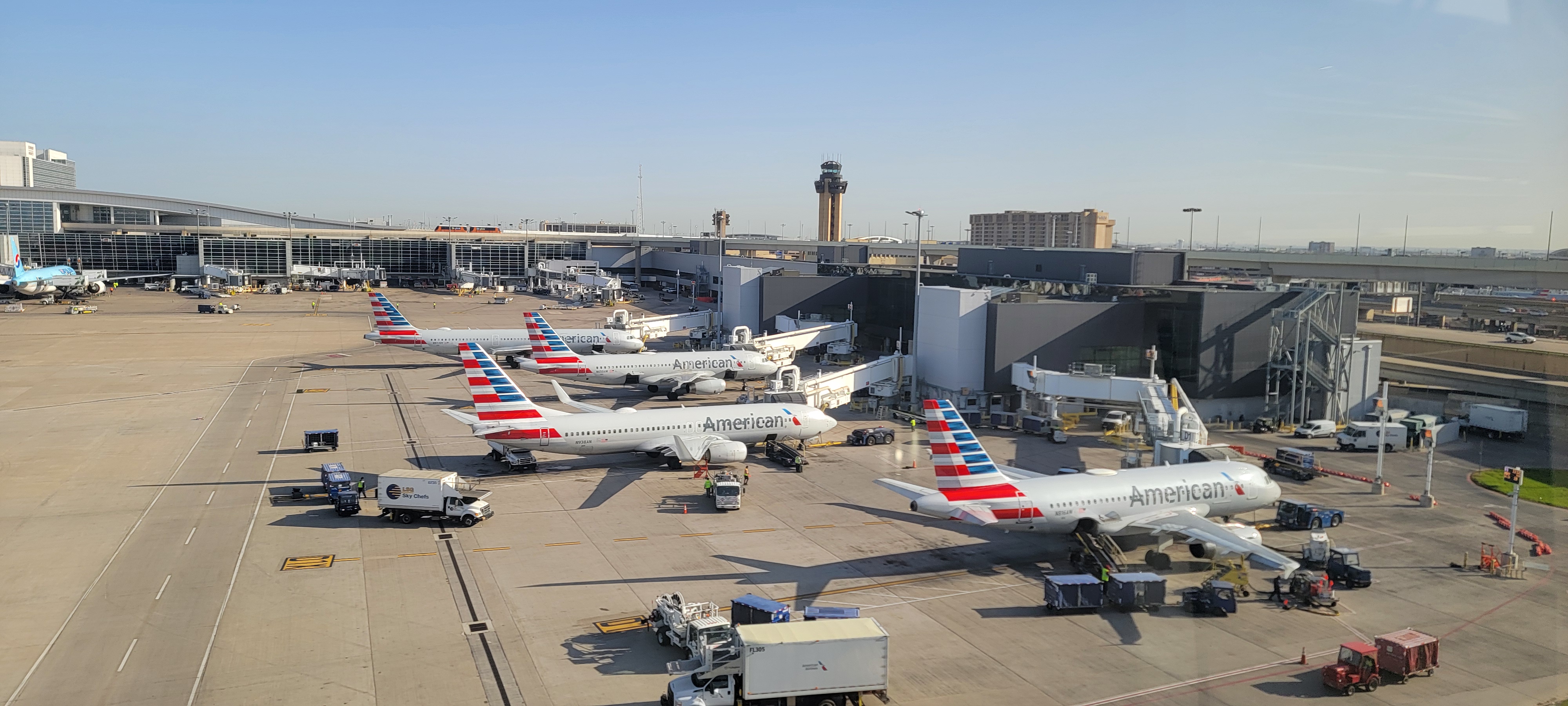American Airlines promises free wifi starting in 2026 which is outstanding and long overdue. ConciergeKey members actually get free wifi starting May 1.
Former American Chairman and CEO Doug Parker guest co-hosted this week’s Airlines Confidential podcast and explains what took so long.
At American they – we, I was there at the time – got to full satellite service at least on all mainline aircraft before any of the others. That wasn’t their constraint in getting this done.
I’m a little dated on this, but when I was there the bigger problem we had was the contract terms we had with the provider…which called for the cost to the airline was driven by the amount of usage, which didn’t make sense…when you’d run the numbers you’d have this fear that if everyone used this it would cost hundreds of millions of dollars.
Then we got into Covid and stopped talking about these things.

Parker says that they would have paid 10 times as much for 100 people using wifi as 10 people using it. But the idea that this was insurmountable just isn’t true. In fact, when Delta was expected to announce free wifi in 2019 American had the press releases pre-written with different versions ready to match whatever Delta did.
And the truth is, as Parker notes, “we got into Covid and stopped talking about” free wifi. Now that Delta and JetBlue both offer free wifi and United is rolling it out as well, American’s most expensive wifi in the industry was no longer sustainable.

I always thought that American had a real opportunity to leapfrog the industry six years ago.
- They were always going to wind up offering free wifi anyway
- And they were ahead in equipping planes with satellite wifi that had the bandwidth to support this
- So they could have led the industry and generated the sort of buzz that Delta captured, for something they were going to do anyway.
American had enough leverage to fix the contracts to make this work, if they’d prioritized doing so. But spending money rather than generating incremental revenue wasn’t something that American Airlines under Doug Parker was about. And they hoped that offering streaming entertainment to customer devices would suffice.

In fact, in September 2017 American Airlines announced free messaging at its Media and Investor Day. There was tons of coverage of the move. But they never did it. When I asked about what happened, then-President Robert Isom acted as though it had never been under consideration.
I’m told that then-Senior Vice President Kurt Stache made the announcement publicly but hadn’t gotten CFO Derek Kerr on board with the change. Kerr pushed back and killed it.

What American had missed is,
- Bundling wifi is actually a profit-maximizing strategy. Once one passenger’s use doesn’t trade off with another’s, and once the incremental cost of use is negligible, bundling generates more revenue and therefore profit for the same reason cable companies do it.
Let’s take a simple example. Customer A will pay up to $100 per year to get news channels, but only $10 a year for sports channels. Customer B will pay up to $100 per year for sports, but only $10 a year for news.
The cable company might sell sports and news each for $99. Customer A would buy sports, customer B would buy news. And the cable company would generate $198.
Instead, if they bundle sports and news into a $109 package, customers get both channels at a price that’s worthwhile to each and the cable company generates $218.
The cable company gets more money, and consumers get more channels which are worth more to them than what they have to pay. When the cost of providing a service is next to zero, then bundling is the clear profit-maximizing strategy.
- It could be used to generate high margin revenue. Delta is showing that they drive loyalty program signups with their free wifi which allows them to market their co-brand credit card to customers. Remember that American Airlines reports a ~ 53% margin on AAdvantage, mostly from selling miles to banks even when actually flying planes may have negative margin.
- Charging for wifi when competitors don’t is a disadvantage competing for customers. When airfares are the same, and one airline charges for wifi while the other doesn’t, the airline charging for wifi has a higher total trip cost and loses business. It was only when US Airways (under Parker’s leadership) saw they were actually losing ticket sales that they finally decided to add air-to-ground wifi to their fleet, since before that they believed they would always lose money installing it and selling its use.

Now that American is finally making moves like free wifi; adding satellite wifi to large regional jets; introducing business class suites; opening a business class lounge at their primary transatlantic gateway in Philadelphia; adding first class seats to smaller narrowbodies; and allowing widebody business class passengers to keep headsets until landing a genuine re-orientation towards premium could get them out of the business of competing just in the race to the bottom on price and schedule and develop real brand loyalty. They already feature one of the best loyalty platforms for doing so.


The biggest problem is the wifi doesn’t work or intermittent on AA
I stopped using it
We flew the mediocre Hawaiian Airlines and they had Starlink the only good thing about the flight.Best wifi ever in the air
“ Former CEO Doug Parker Explains How Contract Costs And Covid Forced American Airlines To Delay Free Wifi Until 2026”
Interesting. I think the story also explains why Doug Parker is a jack a**.
I’m SO glad the Pilots and FA’s union went behind Horton’s back to strike up a deal with Parker. In fact, the head of the APA at the time even bragged about it. Well, they got what they deserved.
Other than long haul premium cabins AA no longer innovates or is the first out of the gate. To a certain extent this might be understandable. Probably 80% of tickets are purchased solely on price. How many overall flyers book away from AA because of no free wifi?
The issue is of course when your competitors offer something free it’s hard not from a PR perspective to jump on the bandwagon. Every blogger out there is going to write why doesn’t AA offer free…….. ? Then Wall Street analysts pick up on and before it becomes a time consuming headache for management.
Once DL announced AA should have seen where this was going and matched the offer, unless management was willing to deal with the fallout because the cost was never going to come back in higher revenues and operating margins.
We were going to be first, but instead we’ll be last. Ok.
I write this as I enjoy Delta’s free/well-working wifi flying transcon. Also the new safety video is quite entertaining. Deltalina is back.
@gary please consume the pcmag dotcom article dated the 16th instant:
“Starlink vs. Hughesnet vs. Viasat: Which Satellite Internet Provider Is Best?”
then research the timeline history the providers and their deals with AA/DL/UA
it’s all available online
your economic model comparison could then be re-written to reflect the current state of play
I just paid $8 on United for full flight wifi on a United Transatlantic flight. Then $12.99 on the way back. I assume the pricing difference was due to the providers. I have heard AA charging $30+ on domestic routes…
Pay $5,000 for trans atlantic business class.
Then get dinged for $30 for an internet connection. Then there is a 50 percent chance you’re going to get a grumpy flight attendant.
They seem to do OK in the food department though.
hagbard,
Gary is not writing about the present situation.
He wrote about AA’s decision to delay WiFi based on what happened in 2019 and 2020.
AA hunkered down into survival mode – which is not surprising considering their margins then and now were well below DL’s and now well below DL and UA, both of which used covid to set themselves up to win in the long-term. and win they both have done.
and it really doesn’t matter whose WiFi is faster in the real life where most people live. Can people stream music or their own videos, can business people do work, and is the service included in the ticket price – regardless of what was paid – just as is the case with WiFi in most other ground settings.
DL had the vision to see its WiFi plan through during covid, UA is now onboard but AA actually could limit UA’s impact precisely because AA has the infrastructure that UA is only now building.
I remained shocked about how little American executive management really understands about today’s business traveller, how to earn a revenue premium and, indeed, the industry itself. They play checkers… and just cut costs… and wonder why they’re in the tank. Exec management would have a lot more leeway if they didn’t misconnect business travelers so often while touting DO improvements. I just laugh… fortunately, I left their madness a few years ago.
Parker was the worst CEO in history and should have been fired before destroying a once great airline (American Airlines).
Doug Parker is the #1 reason that American Airlines is in the bargain basement when it comes to the US3. American has simply become a gigantic version of Spirit & Frontier. He cut every corner imaginable which now shows with rock bottom employee morale, filthy broken airplane cabins, cancelled flights because of the lack of serious preventative maintenance of their fleet, and the list goes on. Doug Parker is absolutely the last single airline manager that anyone should listen to.
He is in the ranks of a sleazy, slimy used car salesman.
Gary, that was a nice synopsis at the end: Free wifi, business class suites, new Flagship at PHL, and the headsets (bah!). I am looking forward to all that as a frequent flyer. However, I’m no fan of the lack of inflight entertainment screens. Delta, United, and jetBlue have this on most aircraft, except small regional jets. AA should not have left IFE out of its 737 and a321 aircraft. I know this usually stirred up irrational debate on here, so let’s freaking go, fellas.
1990
All of that is simply aspirational if American doesn’t deliver on it.
And you still have to legitimately ask the question if American can regain all of the share that it is lost in Key markets that are absolutely necessary for the big three to serve
I strongly believe that, even if American delivered a flawless product, it could not regain the revenue. It’s lost in New York City and Los Angeles to Delta and in Chicago to United.
@tim you too should read the pcmag article
delta and american both use viasat
same birds, same hardware, same protocols up and down
the differences are configuration settings to match the offering policy/performance
Doug parker is to American Airlines what frank Lorenzo and karl ichan were to cal/eastern and twa.
AA may never recover and might end up like eastern and/or pan am during upcoming trump depression.
the article is about residential WiFi but the results aren’t different from what other people have found by measuring aircraft WiFi performance
the reality is that Viasat is capable of doing everything that the vast majority of people want to do – and airlines can throttle back any user – as can any WiFi provider.
and Gary’s point is still accurate that AA has had the equipment installed on most of its fleet as long if not longer than DL. They just failed to take advantage of the opportunity.
and all of these WiFi deals are about buying the capacity from a provider, something DL has done domestically for the better part of a decade.
and DL is turning on free high speed WiFi to S. America and Europe over the next couple months meaning tens of millions of DL passengers will get to experience their first free high speed WiFi on an international flight this summer.
AA isn’t even proposing to do that while it will take UA years to complete installation on its fleet, long after DL has turned on the Pacific.
Maybe if Parker ever sobered up, he could have run a proper airline.
If he didn’t have the millions AA paid him for his incompetence, he would surely be face down in a gutter somewhere.
The real answer was that AA openly admitted from ~2020-2024 that they were trying to be slightly better than Spirit Airlines. Now AA is trying to be a full service carrier again, which requires them to actually provide full service.
That’s what he means by “we stopped talking about it after covid”.
Parker was by far more interested in his pay day than the survival of the airline. slumlord of the sky. I hate to say it, but there hasn’t been a “good” CEO at AAL since Crandall. and he lowered the bar significantly.
AA has not been the same since Doug Parker assumed the top spot. He never grasped the ‘bigness’ of AA and its complexities. Running AA is quite a bit different than running America West. It remains clear the board kept the wrong guys, Parker and Isom, when running off Scott Kirby.
Just one more example of the clueless leadership American was under when Parker was CEO. The right hand didn’t know what the left hand was doing. He couldn’t react to customer needs, but he spent plenty of time and money on DEI related nonsense.
As I opined when the takeover occurred:
“The unions made a deal with the devil and will live to regret it.”
He needs to just fade away.